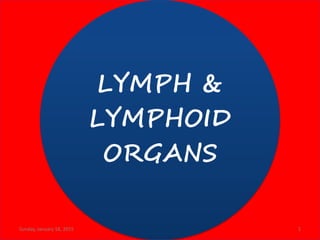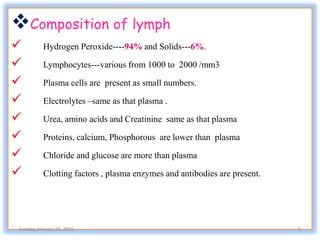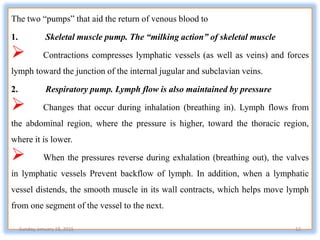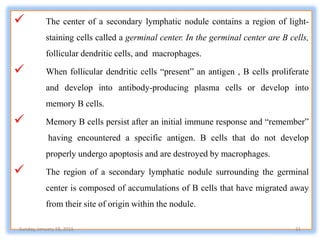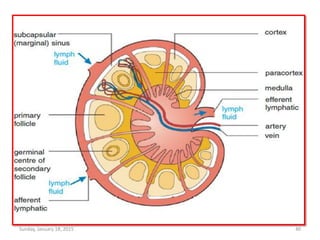The lymphatic system plays a crucial role in fluid balance, immune response, and lipid transport. It consists of lymph, lymphatic vessels, and lymphoid organs, facilitating the movement of proteins and large particles from tissues to the bloodstream. Key components include lymph nodes, the thymus, and specialized lymphatic capillaries that aid in the absorption of dietary lipids.
